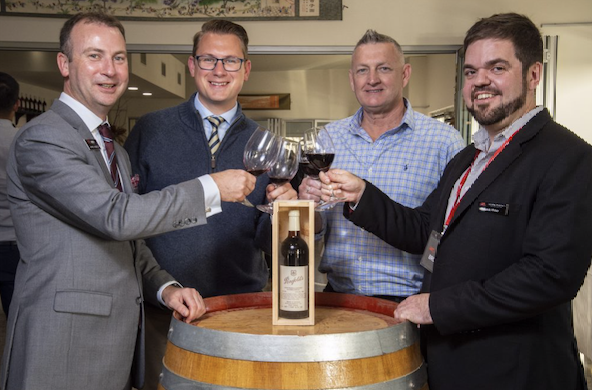The Tb points given to this wine are the world’s most valid and most up-to-date evaluation of the quality of the wine. Tastingbook points are formed by the Tastingbook algorithm which takes into account the wine ratings of the world's best-known professional wine critics, wine ratings by thousands of tastingbook’s professionals and users, the generally recognised vintage quality and reputation of the vineyard and winery. Wine needs at least five professional ratings to get the Tb score. Tastingbook.com is the world's largest wine information service which is an unbiased, non-commercial and free for everyone.
News
Record price for legendary Penfolds Bin 60A
A record price was set for a single bottle of the legendary Penfolds 1962 Bin 60A Coonawarra Cabernet & Kalimna Shiraz at the recent live Barossa Wine Auction. It brought AUD $21,552 (including buyer’s premium) – three times the estimate. This was also substantially above the price for a bottle of the same wine at the last Barossa auction in 2017, which was AUD $14,562.

Total sales from the...
Wine Description
The Story
1962 Penfolds Bin 60A Kalimna Shiraz, Coonawarra Cabernet is a legendary Australian wine. In a world where egos readily clashed, it unified wine critics and show judges. 1962 Bin 60A is Penfolds most successful show wine winning 19 trophies and 33 gold medal. It was a profound oenological, physical and philosophical achievement for its time. Still fresh and alive, it is a lasting model of Max Schubert’s groundbreaking winemaking practices and...
Wine Information
Bin 60A Story / “Joy Lake and I used to taste the first vintages of Grange with Max Schubert and Geoffrey Penfold Hyland in the lab at Penfold’s central office ay Magill. I can’t clearly recall how the connection began, but it had something to do with the fact that I had started writing about wine, and they liked the independence of an articulate surgeon giving opinions on controversial wines they were making. There is no truth on the fable t...
Vintage 1962
Australia / A year of below average precipitation due to a dry winter. However, summer rains in January and again in March made this an exceptional year producing exceptional red wines, despite the poor fruit set for Shiraz.
In 1962 there were 7,174 hectares of vines in the Barossa and 31,774 tonnes of wine grapes were crushed in that vintage.
The introduction of the first Barossa Spaetlese Riesling by Orlando in 1956 had ushered in a ne...
Recommended glass shape
Average Bottle Price
| 2023 | 2020 | 2018 | 2015 | 2013 |
|---|---|---|---|---|
| 9 950€ +15.0% | 8 650€ +35.2% | 6 399€ +9.5% | 5 845€ +57.9% | 3 701€ |
